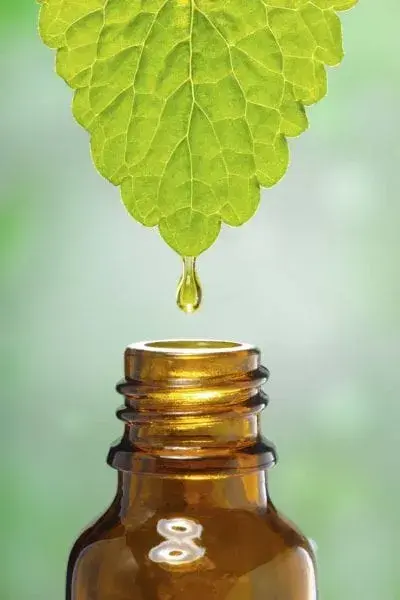7 Supplement Myths: The Guide to Quality Vitamins & Minerals
In the booming $60 billion supplement industry, where shelves groan under promises of vitality and wellness, it's easy to fall for hype. But with recent scandals, like widespread lead contamination in protein powders, buyers beware: not all bottles deliver.
As of 2025, Consumer Reports testing revealed that over two-thirds of popular protein products exceeding safe lead levels, especially plant-based ones, suggesting that consumers must make a savvy selection.
This guide uncovers pervasive myths, dives deeper into bioavailability and contaminants, and equips you with tips updated for 2025. Whether you're combating fatigue or boosting immunity, arm yourself with facts to avoid duds and embrace what works.
Why Supplement Quality Matters
Quality is the difference between nutrients that nourish and those that vanish. At its core, bioavailability measures how much of a vitamin or mineral your body absorbs and utilizes.
For example, bile acids and the lymphatic system transport fat-soluble vitamins (A, D, E, and K) along with dietary fats, whereas water-soluble vitamins (B-complex and C) dissolve directly in the gut but can be flushed out when unused. Factors like chemical form, food pairings, and gut health sway this, e.g., iron from heme sources (meat) absorbs 2-3x better than plant non-heme.
Fillers like magnesium stearate reduce potency, and a report flagged contaminants in protein powders, urging labels to include more than just nutrition facts.
The NIH estimates that some supplements fail independent purity checks, risking heavy metals or degraded actives. Prioritize third-party seals (USP, NSF, ConsumerLab) and GMP certification for manufacturing hygiene.
Myth #1: All Supplements Are the Same
Far from uniform, supplements differ in sourcing and form. Whole-food vitamins often outshine synthetics for cofactors that aid uptake, while cheap multis cram binders that hinder it. Even "organic" labels don't guarantee purity.
Key Fact: Chelated minerals (e.g., zinc bisglycinate) boast 40-50% higher absorption than oxides, per bioavailability studies. Ditch generics; seek fermented or liposomal forms for gut-friendly delivery.
Myth #2: Supplements Are Heavily Regulated
The FDA classifies supplements as food, skipping pre-market approval for efficacy or safety. Updates include a new ingredient directory and allergen guidance, but no routine potency checks. Audits show 30% of firms skip raw material verification, breeding inconsistencies.
Pro Tip: Hunt GMP and NSF badges; the FDA's 2025 agenda eyes better labeling, but enforcement lags.
Myth #3: Labels Always Reveal True Contents
Heat, humidity, or prolonged storage can rancidify oils like omega-3s or vitamin E, reducing their efficacy by up to 70%. Hidden contaminants—pesticides, microbes—slip past lax oversight. I've seen patients abandon turmeric after inert batches loaded with fillers.
Deeper Dive: Airtight, dark packaging preserves potency; antioxidants like vitamin C stabilize fragile compounds.
Myth #4: Labels Show Exact Amounts You'll Get
Focus on elemental (pure) vs. total weight. The product "Calcium Carbonate 1000 mg" may only produce 400 mg of elemental calcium.
Example Breakdown:
- Product A: Calcium Citrate 1000 mg (≈210 mg elemental + binder)
- Product B: Calcium (Citrate) 500 mg (500 mg elemental, chelated for 30% better uptake)
Pair with vitamins D and K2 for synergy—absorption jumps 20-40%.
Myth #5: More Is Always Better
Excess selenium is tied to hair loss; zinc overload disrupts copper balance. Fat-soluble vitamins accumulate, risking toxicity. A study links high vitamin A to bone fragility.
Science Bit: Aim for 100-150% RDA; therapeutic doses need lab oversight. Blood panels reveal true needs.
Myth #6: Natural Supplements Are Always Safe
Ephedra's ban echoes today's risks with untested herbs like kratom. St. John's wort interacts with 50% of meds; "organic" greens often harbor lead from soil.
Heads-Up: Verify wildcrafted sourcing; synthetics can match bioavailability without allergens.
Myth #7: Everyone Needs a Daily Multivitamin
An EUFIC review found multivitamins unnecessary unless deficient (e.g., vegans for B12). They shine as insurance, not a staple.
Reality Check: Targeted singles outperform broad multis; over-reliance masks poor eating.
Contaminants in Today's Supplements
CNN reported that chocolate and plant proteins are topping the lead/cadmium charts, with 70% exceeding FDA action levels per serving. FDA's toxic elements initiative targets arsenic and mercury, but self-reported data gaps persist.
Vulnerable groups? Pregnant individuals and children are particularly vulnerable to neurodevelopmental issues due to cumulative exposure.
Protect Yourself: Opt for chelated, low-contaminant brands; apps like Yuka scan for reds.
Signs of Low-Quality Supplements
Red flags:
- Powdery residue or fishy odors (oxidation).
- Absent seals or vague "proprietary blends."
- Bargain bins under $0.15/serving.
- Swelling capsules (moisture breach).
A 2025 AAD alert linked impure substances to acne flares and false labs.
How to Read Labels Like a Pro: Step-by-Step
Here is a step-by-step process to read labels like a pro:
- Elementals First: Seek ( ) for pure doses.
- Forms Matter: Methylcobalamin is preferred over cyanocobalamin for B12, and piperine increases the effectiveness of curcumin by 20 times.
- Allergens & Additives: Flag gluten and soy; embrace enzymes for digestion.
- Serving Savvy: Serve fat-soluble vitamins with fats; split doses for steady levels.
- Expiry Check: Post-2025, look for stability claims.
Testing for Deficiencies: Don't Guess
Before buying, lab up: Comprehensive panels (e.g., SpectraCell) pinpoint gaps in vitamins D, B12, and iron. At-home kits like Everlywell cost $50–200; annual checks are for high-risk athletes and seniors.
FAQs
Q1. What's the biggest bioavailability booster?
A: Pairing nutrients with the right enhancers is key, but in 2025, advanced delivery systems like liposomal encapsulation and nanoemulsions top the list for maximizing absorption, encasing vitamins in fat bubbles to bypass gut barriers and boost uptake by up to 90% for water-soluble nutrients like vitamin C. Chelated minerals, such as magnesium glycinate, also shine, offering 2-3x better absorption than basic forms by mimicking natural food bonds. To get the most out of a dose without wasting it, always combine it with food synergies, like vitamin D with fats.
Q2. How common is supplement contamination in 2025?
A: A study found that a shocking number of supplements were contaminated, with more than 70% of 23 popular protein powders having lead levels above safe limits per serving, especially in plant-based options, because of soil absorption. The Clean Label Project echoed this, noting worsened heavy metal issues since prior audits, affecting cadmium and arsenic as well. To sidestep risks, stick to third-party tested brands; apps and seals like NSF can filter out the tainted ones before they taint your routine.
Q3. Do multivitamins prevent disease?
A: Large-scale reviews, including a 2024 JAMA analysis of nearly 700,000 people, found no reliable reduction in heart disease, cancer, or cognitive decline from daily multis. The NIH's 2025 fact sheet reinforces this: Up to a decade of use shows minimal chronic disease protection for well-nourished folks, though they might fill minor gaps. Bottom line? There's no magic shield; focus on diet first, using multis as a targeted backup if tests reveal shortfalls.
Q4. Can a vitamin D overdose happen easily?
A: Indeed, surpassing 4,000 IU daily poses a long-term risk of hypercalcemia, a condition where an excess of calcium floods the blood, leading to symptoms such as nausea, kidney stones, and even organ damage. Mayo Clinic warns it's more common than thought, especially with combo supps or sun avoidance pushing folks to megadose without monitoring. The NIH's 2025 update sets safe levels at a blood minimum of 50 nmol/L (20 ng/mL), so test quarterly if you are heavily supplementing to avoid toxicity.
Q5. Natural vs. synthetic: True differences?
A: Debate rages, but 2025 insights show natural supplements from whole foods often edge out with co-factors for better synergy and absorption, like folate from greens vs. isolated folic acid. Synthetics, however, match or exceed in purity and cost, with studies finding no nutrient status gap for most vitamins—though some bodies prefer natural's gentler profile. Choose based on needs: Choose natural for its holistic benefits and synthetic for its precision dosing without allergens.



